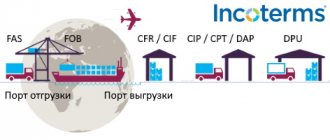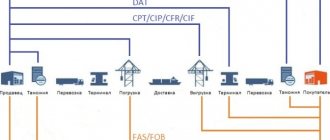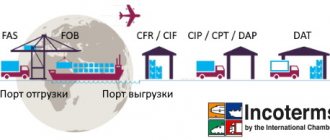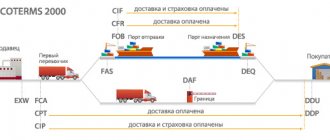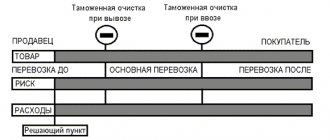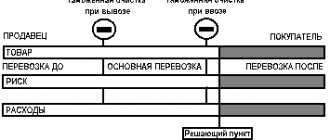When concluding purchase and sale transactions, a number of nuances arise. Therefore, now we will consider the essential terms of the supply agreement under the Civil Code of the Russian Federation: we will figure out which points are considered main and secondary - so that you understand what to focus on and how to formalize the obligation relationship with maximum benefit for yourself.
Note that any contract is a set of clauses agreed upon by the parties. It also contains a preamble, details, legal addresses and is certified by signatures. With a competent approach, it is drawn up taking into account not only current regulations, but also the practice of arbitration courts (in order to prepare in advance for the settlement of disputes). This is in the general case, and we are already moving on to particulars.
What is a supply agreement
This is a document that describes the obligations of the seller and buyer of any item purchased for use for consumer, commercial or other purposes. The role of the seller can be either an organization of any OPF or an individual entrepreneur. If the provisions agreed upon in this contract are not observed in practice, it will cease to be valid. From a legal point of view, it is regulated on the basis of the provisions of paragraph 3 of Chapter 30 of the Civil Code of the Russian Federation. To maximize the protection of your interests, it is worth drawing up and concluding it with the help of an experienced lawyer.
Terms of delivery under the contract
The rules for creating this document are regulated by Article 432 of the Civil Code of the Russian Federation, according to which it comes into force after reaching an agreement on all essential points and affixing signatures. All its legal aspects are regulated by the already mentioned Chapter. 30 Federal Law No. 14.
There are several variations of it:
- one-time or providing for regular delivery of specified objects over a long period of time;
- extending to one type of item or a group of items, for example, a specific model of a body part or their entire range;
- with a concise accompanying description or filled with detailed reviews and complex technical characteristics, with a range of applications.
And all of them have the following features:
- in any case, they legitimize the commercial transaction between the supplier and the buyer, that is, business entities;
- focus on products not intended for the personal use of either party;
- are concluded for mutual benefit;
- describe objects that have a certain economic value - those things that can be realized (or business processes can be organized with their help).
Ready-made solutions for all areas
Stores
Mobility, accuracy and speed of counting goods on the sales floor and in the warehouse will allow you not to lose days of sales during inventory and when receiving goods.
To learn more
Warehouses
Speed up your warehouse employees' work with mobile automation. Eliminate errors in receiving, shipping, inventory and movement of goods forever.
To learn more
Marking
Mandatory labeling of goods is an opportunity for each organization to 100% exclude the acceptance of counterfeit goods into its warehouse and track the supply chain from the manufacturer.
To learn more
E-commerce
Speed, accuracy of acceptance and shipment of goods in the warehouse is the cornerstone in the E-commerce business. Start using modern, more efficient mobile tools.
To learn more
Institutions
Increase the accuracy of accounting for the organization’s property, the level of control over the safety and movement of each item. Mobile accounting will reduce the likelihood of theft and natural losses.
To learn more
Production
Increase the efficiency of your manufacturing enterprise by introducing mobile automation for inventory accounting.
To learn more
RFID
The first ready-made solution in Russia for tracking goods using RFID tags at each stage of the supply chain.
To learn more
EGAIS
Eliminate errors in comparing and reading excise duty stamps for alcoholic beverages using mobile accounting tools.
To learn more
Certification for partners
Obtaining certified Cleverence partner status will allow your company to reach a new level of problem solving at your clients’ enterprises.
To learn more
Inventory
Use modern mobile tools to carry out product inventory. Increase the speed and accuracy of your business process.
To learn more
Mobile automation
Use modern mobile tools to account for goods and fixed assets in your enterprise. Completely abandon accounting “on paper”.
Learn more Show all automation solutions
What are sellers doing wrong?
The list of the most common includes at least 8 errors that occur during the preparation and delivery of goods to marketplace warehouses. Many sellers repeat them with enviable regularity.
They ignore marketplace regulations
The first and most common mistake is ignoring established requirements. Each platform has its own. Moreover, all the rules for working with warehouses and partners are described in detail in the instructions on the website.
You should always study them carefully before starting a collaboration. Oddly enough, some people read the rules superficially or completely omit this point. As a result, this leads to numerous violations, due to which the goods are not accepted upon shipment. And while the necessary items are not available, the seller’s rating drops significantly.
The requirements of each specific site can be found in the knowledge base or personal account on the website. They spell out the rules regarding packaging and labeling of various categories of products, prohibited items, features of unloading at the warehouse, and delivery schedules.
Violate deadlines and delivery schedules
Another common problem situation is a violation of the delivery schedule. Almost all trading platform warehouses accept goods on strictly defined days and time intervals. If the cargo is delivered later than necessary, it will most likely simply not be accepted. In this case, all that remains for the seller is to wait his turn on other reception days.
Waiting often has a negative impact on work. Most marketplace buyers are not willing to wait for the desired item to appear at a specific seller. They are more likely to go and buy a similar product from competitors.
Deliveries should be planned in advance, taking into account the nuances of the specific platform. For example, as practice shows, Ozone warehouses often operate at maximum capacity. If you do not follow the plan, especially during the holidays, significant delays are possible.
The fact of arrival at the warehouse territory is recorded in the log. In this case, you should adhere to the designated time window. You are allowed to arrive 1.5 hours in advance, but no later than 40 minutes before it starts. If you are late, shipment will be refused.
Doesn't track sales analytics
The seller must have an optimal amount of goods in the marketplace warehouse. You cannot rush to extremes when in one case there is overstocking and in another there is a shortage. Excesses lead to unnecessary warehousing costs. A shortage is fraught with the loss of customers who leave due to a long wait for an order.
To prevent this from happening, you need to make shipments regularly, but as inventory balances decrease. Therefore, it is worth closely monitoring the volume of reserves and the sales situation.
Analytics service
Analytics helps control the issue. Based on its data, consumer demand is predicted and a sufficient amount of inventory is maintained. You should definitely study analytics. Some marketplaces have internal statistics on important parameters. If this data is not enough for objective analysis, you can connect external services. For example, MPStats, MoneyPlace.
What does such software do:
- monitors the position of products in the ranking;
- shows the most popular and unprofitable positions;
- maintains purchase history;
- generates reporting;
- helps forecast demand and plan purchases.
The goods are packaged incorrectly
Packaging is a particularly difficult stage in preparing goods for shipment to the marketplace warehouse.
Every detail matters in this matter:
- appearance – the packaging must be neat, durable, close tightly (protect it from accidental opening with rubber bands, stickers, additional fasteners), and maintain the presentation of the product;
- type - boxes, pallets, stretch film, and so on, depending on the product category;
- size – length, width and height relative to the dimensions of the enclosed product;
- additional requirements - shoes in special bags and with elements to absorb excess moisture; Liquids in glass containers with lids should be packed in bubble wrap and a bag with sealed edges.
Product packaging rules on Ozon
Again, requirements vary by site. The strictest rules in this regard are at Wildberries. On Ozon they are a little simpler and differ in different schemes, when the goods are sold from their own warehouse and from the warehouse of the marketplace. Please review these requirements carefully before preparing.
Products are not labeled or labeled incorrectly
When accepting any cargo, warehouse employees check the labeling on products and packaging. It must not only be present, but also comply with the rules of the platform.
What to indicate:
- name of the product item;
- country of origin, manufacturer;
- seller's address;
- release date;
- sizes, color, composition;
- guarantees.
A mandatory rule is the presence of a barcode in the established format. A unique readable code that matches the specification data is applied to the tag. It must be on every box and pallet. Wildberries additionally require that you include a packing slip with information about the item. Also, each product must have a retail price tag.
Example of correct marking
If the label is missing or does not contain the necessary information, the product will not be accepted. The reason for refusal may also be the lack of any data on the labeling.
Marriage includes:
- lack of a Russian-language label on the outside of the package, data on the date of manufacture, expiration dates;
- lack of certificates for certain categories (cosmetics, perfumes, animal feed, food);
- exceeding the established dimensions;
- the presence of deformations and breakages, both on the product itself and on the packaging;
- unreadable code on the label;
- third-party labeling on packaging;
- delays.
In all of the above cases, the product must be returned.
Failure to attach or incorrectly complete supporting documentation
Any product supplied to the marketplace must be accompanied by appropriate documentation.
To deliver to Ozon, you need to create a universal transfer document in the EDI system. It is called UPD-2. This is an invoice that is issued for each vehicle and includes:
- act of acceptance/transfer of products;
- shipping invoice;
- commodity part of the TTN.
Especially for new suppliers, the platform has detailed instructions for filling out this document. Also, for the convenience of partners, filling templates are provided.
UPD sample
In addition to the UPD, you need a pass for the driver and permits to use the brand. All files must be uploaded to your personal account in Excel format.
The main document for shipment to Wildberries is the TTN. Acceptance is carried out strictly according to the data specified in the delivery note. There you need to indicate the exact quantity of goods in the packages and all the necessary additional information.
Repeat deliveries are much easier here.
It will be enough for them:
- place an order in your personal account on the website;
- provide information about the car and driver;
- mark the warehouse, delivery day.
The absence of a driver pass or any inaccuracies in the data may result in the return of the goods. This happens even because of one wrong letter or number in the car number.
Before entering the checkpoint, the camera always reads the vehicle number. If it does not match what is indicated in your personal account, the car will not be allowed into the warehouse. Therefore, you should always double-check the data. For those who cooperate with transport companies, it is better to clarify the information necessary for the pass with the carrier.
They do not pay attention to transport requirements
In addition to the driver's pass requirements, there are also separate rules for vehicles delivering goods. They mainly relate to the dimensions of the vehicle.
An example of transport requirements for Wildberries:
- body width – at least 1.85 meters;
- The minimum distance from the side of the car to the ground is 1.1 meters.
If a vehicle with smaller dimensions arrives at the warehouse, the supplier will have to unload it on its own.
There may be discrepancies in the number of boxes
This is also a fairly common occurrence during shipment. In fact, there are fewer or more boxes than stated in the documentation. This happens when the seller is in too much of a hurry with the preparation and shipment itself and does not have time to check everything properly. In this case, it’s better not to rush, otherwise you may run into even greater delays in deliveries later. Loaded boxes must be carefully checked and counted several times.
Correct packaging of goods upon shipment
What conditions are not considered essential?
Those without whose approval the document will be concluded. But this does not mean that they should be ignored or given a small role - they should be given attention, and in some cases one of them can become an effective tool for extracting benefits.
Before considering them, let’s say that when concluding a transaction it is always worth checking the nuances of acceptance, quality assurance and the specifics of the parties’ responsibilities. To reduce your own risks, it is advisable to fix the volume and nature of the payment of a penalty (monetary or in kind) in the event of failure to fulfill obligations. Well, now let's move on to the minor nuances.
Payment
The essential (mandatory) terms of the supply contract are those regulated by legislative acts. The price and method of mutual settlements do not fall under this category; they are not regulated by the rules and regulations of the Federal Law. They are fixed by price lists, tariffs, price lists and other offers, usually coming from the supplier. But the customer also has the right to take the initiative.
Today, the choice of the option for transferring funds, as a rule, remains with the buyer: he decides what is more convenient for him, making a 100% advance payment or, for example, making a one-time transfer of money. In an effort to attract customers, sellers often promise the possibility of installment plans and even develop an individual schedule convenient for the other party.
Procedure for providing products
Here you need to take into account what refers to the essential terms of the contract for the supply of goods under the Civil Code of the Russian Federation. Article 508 quite specifically defines this point: if items will be delivered in batches, but the exact dates of their receipt are not specified in the contract, it is understood that the items will arrive in equal monthly installments (unless legal acts, Federal Laws or generally accepted practice imply something different).
Naturally, this is not always convenient. This format is not suitable when the lion’s share of the property for sale is needed in a short time or it is not possible to wait six months. Therefore, it makes sense to record this point and clearly outline the time intervals for fulfilling obligations.
Insurance
Protect your supply agreement from risks: the essential condition of the document is the object of the transaction, but not the associated costs of obtaining it. In practice, this means that the parties have the right to divide the costs of issuing a policy equally or to the extent that each of them agrees. This is the point in the contract where you can look for and need to find a compromise. But with the right approach, it will be possible to strengthen business relationships, make them more trusting, and show a focus on long-term cooperation.
Transfer procedure
Including this item greatly simplifies the receipt of items and therefore increases customer loyalty. Clarity on this issue is also convenient for the seller. Judge for yourself: is the place of delivery of goods an essential condition? According to regulations, no, but if the seller knows exactly where to deliver the shipment, this will help avoid confusion and overlaps.
In addition, the customer will be able to prepare for acceptance in advance, and this will also help save time and speed up the closing of the transaction. Therefore, such points as date, hour, address also deserve attention, and it is better to include them in the documentation to avoid misunderstandings. And vice versa: if you do not include these points, the second party will have leverage over the situation and the opportunity to turn it in its favor, for example, artificially delay the delivery of products, explaining that they were delivered to the wrong place.
We remind you that all these are additional points, the absence of which in the text of the document does not result in the invalidity of the contract.
Transfer of ownership of goods under a supply agreement
Expert consultation
The essence of the supply agreement is to provide the goods to the buyer. A common question is: when does a buyer become an owner? It is from this moment that the buyer has the opportunity to dispose of the goods. For example, he can sell it or rent it out. But what document exactly indicates receipt of the goods? How to determine the moment of transfer of ownership? You can learn all the nuances of the transfer of ownership from the article by our expert Anastasia Chekmareva.
***
The moment of transfer of ownership may be established by agreement. If nothing is prescribed, we are guided by the law.
What influences the moment of transfer of ownership?
Let's look at why it's important to understand when a buyer becomes an owner. The transition affects the following important points:
- the ability to dispose of goods received but unpaid for. For example, the buyer cannot sell or lease it before the transfer of ownership;
- the supplier's ability to return the goods in case of non-payment. If the buyer became the owner of the goods before payment, the supplier will not be able to demand a return, only expect payment.
The law states that the transfer of ownership occurs at the moment the goods are transferred to the buyer (Article 223 of the Civil Code of the Russian Federation). Transfer is possible in various ways: delivery by the supplier, delivery using a transport company or sampling (pickup). It depends on the method when exactly the buyer becomes the owner.
The ConsultantPlus reference and legal system has Guides to all types of contracts, as well as a complete database of related documents
Transfer of ownership upon delivery
If the contract does not stipulate anything about delivery conditions, then the goods must be delivered under any conditions chosen by the supplier. He can deliver it himself or with the help of a transport company. In this case, the buyer becomes the owner at the moment of delivery of the goods to the buyer or the person indicated by him (clause 1 of Article 223, clause 1 of Article 224, paragraph 2 of clause 1 of Article 458 of the Civil Code of the Russian Federation).
Please note that the delivery of a waybill or other document evidencing the transfer is equivalent to the transfer of the goods themselves (clause 3 of Article 224 of the Civil Code of the Russian Federation).
To determine the moment of transfer, supporting documents are used:
- acts of acceptance and transfer;
- waybills;
- UPD -
and others.
Such documents can confirm that an actual transfer has taken place until proven otherwise. This position is confirmed by judicial practice. Determination of the Supreme Court of the Russian Federation dated February 4, 2016 No. 303-ES15-14545.
When agreeing on the transfer of ownership upon delivery in the contract, we recommend linking this moment with the signing of documents: the acceptance certificate, goods or waybill, etc. Specify which document this moment is tied to the signing of in order to avoid controversial issues. The dates for signing various documents may vary.
Example wording
Ownership of the goods passes from the supplier to the buyer from the moment it is transferred by the supplier’s representative to the buyer’s warehouse and the invoice is signed by the buyer’s representative.
The transfer of ownership can be tied to another moment. For example, if you have a contract for delivery in batches, you can provide that ownership of the products becomes the date of receipt of the last part of the monthly batch in full.
Example wording
The moment of transfer of ownership of the supplied products is the date of acceptance of the last part of the monthly consignment of goods, indicated in the shipping documents.
In this article, our expert talked about operations with goods subject to traceability.
Transfer of ownership during sampling
Sampling means that the buyer independently picks up the goods at the supplier’s warehouse (Article 515 of the Civil Code of the Russian Federation). When ownership transfers during sampling is a controversial issue. Let's consider what the law tells us on this topic.
When sampling, the supplier is considered to have fulfilled the obligation to transfer the goods not when they are actually transferred, but at the moment they are made available to the buyer (paragraph 3, clause 1, article 458 of the Civil Code of the Russian Federation). These points, as a rule, do not coincide.
The goods are considered made available when the supplier has placed them in the warehouse and notified the buyer that he can pick them up. At this moment, according to the law, the risk of accidental death passes, that is, if the supplier placed the goods in the warehouse and notified the buyer about this, then he has already fulfilled his obligation to transfer. Moreover, if there is a risk of accidental loss (for example, the warehouse was flooded or it burned down) for reasons for which neither party is responsible, then the buyer is obliged to pay for the goods. In this regard, we recommend that buyers agree on the transfer of the risk of accidental death in the contract.
But now we are talking about the transfer of ownership. The law does not establish that the moment of fulfillment of transfer obligations, the transfer of the risk of accidental death and the transfer of ownership occur at the same time. This may result in uncertainty.
On the one hand, the ownership right passed to the buyer, since the supplier fulfilled the obligation to transfer it (clause 1 of Article 223, paragraph 3 of clause 1 of Article 458 of the Civil Code of the Russian Federation). In this case, the goods have not actually been transferred; accordingly, the buyer is not the owner (clause 1 of Article 223, clause 1 of Article 224 of the Civil Code of the Russian Federation).
In this regard, we recommend that this point be spelled out in the contract.
You can, for example, link the transfer of ownership to the moment the products are transferred to the buyer at the supplier's warehouse.
Example wording
Ownership of the goods passes from the supplier to the buyer at the time of actual delivery of the goods to the buyer or its consignee at the supplier's warehouse.
Transfer of ownership of goods upon payment after delivery
If the goods are paid for after delivery (postpayment, credit, installments), ownership rights are transferred according to the general rule - at the time of transfer to the buyer (Article 223 of the Civil Code of the Russian Federation).
By contract, the supplier can protect its interests by specifying that ownership is transferred only after full payment. So the supplier remains the owner and, if there is no payment, may demand the return of the goods (Article 491 of the Civil Code of the Russian Federation).
Example wording
Ownership of the goods passes to the buyer after full payment for the goods.
Please note that if the goods become the property of the buyer without payment, even if nothing is specified in the contract, restrictions on use are possible. We are talking about collateral for goods sold on credit.
From paragraph 5 of Art. 488 of the Civil Code of the Russian Federation it follows that goods sold on credit are pledged to the supplier until payment is made, unless otherwise provided by the contract. This means that, despite the fact that the buyer is already the owner from the moment of transfer, he, as a general rule, does not have the right to alienate such goods without the consent of the supplier (Clause 2 of Article 346 of the Civil Code of the Russian Federation).
It is in the buyer's interests to agree on other terms in the contract.
An example of a condition statement
The goods transferred under this agreement are not considered to be pledged to the supplier.
If there is no such wording in the contract, then the goods will be pledged, but only if the contract states that it was sold on credit.
Let's consider the Resolution of the Arbitration Court of the North-Western District dated June 10, 2020 No. F07-3226/2020 in case No. A21-12877/2018. The seller and buyer entered into an agreement for the supply of equipment, where they indicated that delivery would be carried out within three days after payment. In this case, the equipment was delivered to the buyer, he accepted it and signed the acceptance certificate, but did not make payment. The seller demanded that the buyer return the equipment and then went to court. His demands were not met. It does not follow from the contract that the equipment was sold on credit; on the contrary, the payment and delivery procedures were agreed upon. The fact that delivery was made before payment does not mean that the terms of the contract have been changed. Accordingly, the buyer is the owner and has the right to dispose of the goods.
To summarize, we recommend agreeing on the moment of transfer of ownership in the contract. This option will help avoid controversial situations and find a mutually beneficial solution for the parties.
Question
The contract stipulates that the transfer of ownership occurs after full payment, while it is stated that the buyer has the right to dispose of the goods until full payment. In case of non-payment, can the supplier demand the buyer to return the goods?
Answer
The supplier will not have the right to demand a return, since the contract stipulates that the buyer can dispose of the goods at this time.
When such a condition is agreed upon, an exception to the general rule occurs (Article 491 of the Civil Code of the Russian Federation). The supplier has the right to return unpaid goods if the right to dispose of them has not been transferred to the buyer. In this situation, such a moment is agreed upon before the transfer of ownership.
Please note that the supplier does not lose the right to demand from the buyer who has not paid for the goods the fulfillment of the payment obligation, a penalty if it is established by the contract, as well as payment of interest in accordance with Art. 395 of the Civil Code of the Russian Federation.
Anastasia Chekmareva, teacher-lawyer at “What to do Consult” LLC
Random delivery conditions
They mean those items that are included at the discretion of the seller and/or buyer. If mutual understanding is not reached on one, several or all of them, this does not entail recognition of the contract as non-compliant.
The following points can be cited as an example:
- the amount of fines due to failure to meet the delivery schedule or payment plan;
- the container in which the objects will be sent;
- specifics of resolving disputes due to damage, inadequate quality and other violations.
You can compose a preliminary document text (to subsequently show it to the other party) using templates already available on the Internet.
Now that you know the essential (noun) and non-essential terms of the supply agreement and the difference between them, it will be easier to do this. Although we still advise you to use the help of lawyers with the appropriate specialization - this way you will insure yourself against many mistakes. Number of impressions: 7780
How to simplify the shipment of goods to marketplaces
One of the simplest and most obvious ways is to very carefully study the instructions of the chosen platform and diligently follow them . In this case, the risks of errors and return of goods are minimal. This means that work will take place as usual, and situations with the lack of necessary products and associated customer dissatisfaction will not arise.
To make the process go faster and more efficiently, it is worth developing internal regulations for the preparation of goods, appointing separate employees who will be responsible for packaging, labeling, preparation of documentation, and delivery.
For example, the shipment procedure to Ozone goes like this:
- The seller studies the requirements of the marketplace.
- Registers in the system and enters into an agreement.
- Before the first delivery, he coordinates the schedule with the purchasing department, dates, times and warehouse are assigned to him.
- Labels and packages products as required.
- Uploads shipping documents to your personal account.
- Prepares accompanying documentation.
- Sends a vehicle with cargo to the desired warehouse.
- Ships the goods.
On Wildberries, the instructions include eight mandatory steps:
- Uploading an order with a unique number in the “Supply Management” section.
- Creation of product specifications (for new units, sizes and colors).
- Assigning the desired delivery date to the warehouse in the plan.
- Loading box barcodes.
- Formation and sending of TRN in the EDI system.
- Adding photos and videos of products.
- Uploading original brand logos.
- Order passes for authorized deliveries.
In order not to experience any inconvenience and difficulties associated with shipment, you can entrust the task to one of the companies that provide fulfillment services for marketplaces.
This is especially true for sellers who work on several platforms simultaneously. Each of them has its own requirements for packaging, documentation and delivery. In such conditions, the shipping process often turns into a continuous obstacle course.
Fulfillment: classic scheme
Fulfillment frees the seller from many problems and ensures timely deliveries to marketplace warehouses. The main advantage of the service, which covers a range of logistics activities, is cost reduction for the entrepreneur.
When choosing a suitable fulfillment center, you need to pay attention to:
- his work experience;
- location and area of warehouses;
- what marketplaces it works with;
- set of services;
- rates;
- delivery terms.
The most popular operators in Russia are SDEK, DSS, B2CPL.


